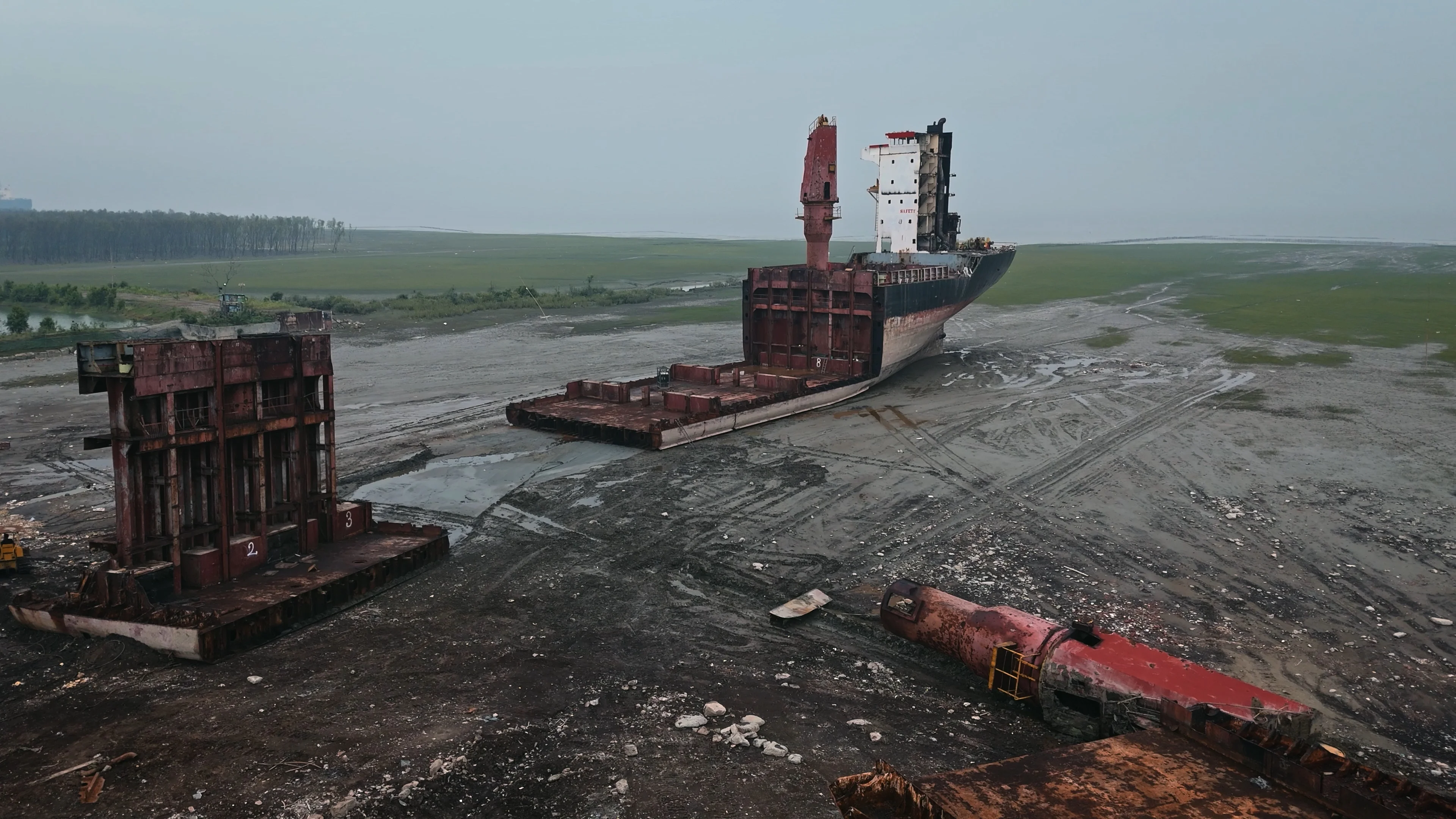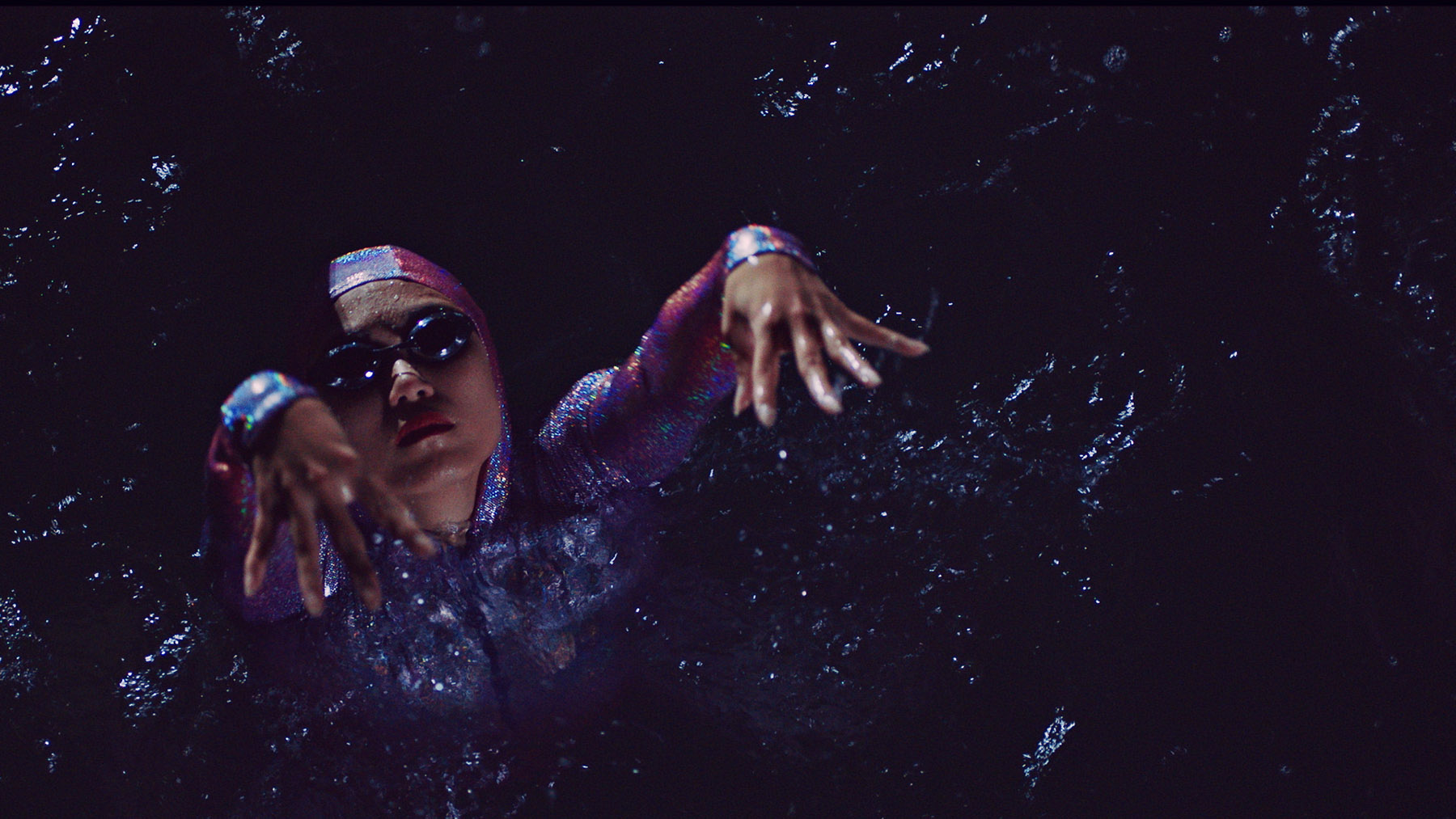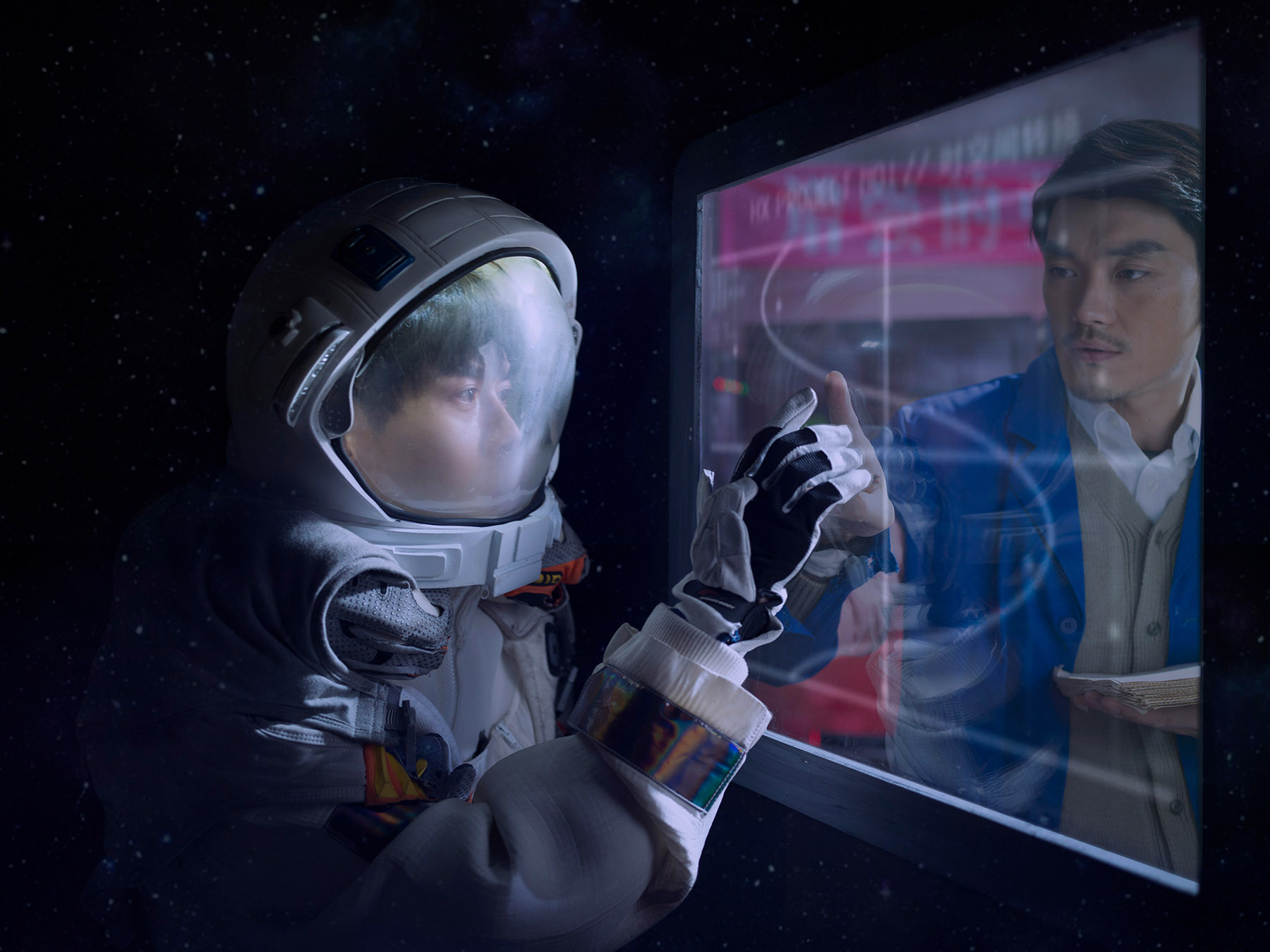
A decommissioned oil tanker lies against the muddy shore — like a beached whale being harvested for its body parts. The mise-en-scene lasts the full 10 minutes of the video film’s length. It seems the camera, zooming in from above, is unable to avert its gaze, captivated by the terrible beauty of dismembered giant vessels sprawled out against a panoramic vista of land, water and sky.
The ship-breaking yard in Chittagong, Bangladesh — where Monira Al Qadiri’s Oh Body of Mine (2025) was filmed — is one of those places where these behemoths come to die, having played their parts in the global supply chain. It’s also one of those places in the Global South where labor is cheap and the infrastructure needed to deal with such environmental hazards is woefully inadequate.
ALSO READ: Different takes on losing a child
Senegalese-born Kuwaiti filmmaker Al Qadiri was one of four artists featured in Avant-Garde Now: Time Travellers, the third edition of an M+ museum-hosted series that turns the spotlight on new, experimental work within moving image practices. Al Qadiri had excellent company in Japanese virtual-reality artist Meiro Koizumi, Nepalese filmmaker Subash Thebe Limbu, and Chinese multimedia artist Cao Fei. Held on Sept 13, the daylong program of films, a VR experience, and conversations with artists gave viewers a sampling of what moving-image artists of today make of the notion of time.

All four artists seem to take their cues from history and/or mythology in order to make sense of the present and envisage the future. Limbu’s 2023 film, Ladhamba Tayem; Future Continuous, imagines a meeting between a historical figure — Kangsore, an 18th-century Yakthung warrior who resisted the Gorkha colonial army — and a Yakthung astronaut from the distant future in a bare, luminous, phosphorescent Himalayan landscape.
In her 2018 video piece Diver, Al Qadiri reimagines the pearl divers of the Persian Gulf — pearling was one of the mainstays of Gulf economy until the discovery of oil in present-day Iran in 1908 — as synchronized swimmers in dichroic body suits. They perform to a soundtrack that’s a mix of contemporary music with a ’60s recording of pearling boat sailors’ songs in which the exertion of the rowers, and a prayer for a safe passage, are also discernible.
Speaking from her Berlin studio via video call, Al Qadiri reminds viewers that the glittering fish-scale texture of the divers’ body suits “references the colorful sheen of both pearls and oil”. “Pearl diving has a history of extreme poverty though the divers make it look as if it’s magical and fun,” she adds.

The defunct Hongxia Theatre in Beijing serves as the location of Cao’s 2019 film, Nova — in which a boy gets trapped in a digital realm in the course of an experiment and is left there to “oscillate inescapably between past and future”. Originally a theater meant for factory workers, the building is in an industrial area where the components of China’s first computers were produced with support from the Soviet Union in the ’50s. The film is a retro-futuristic mishmash of multiple realities, taking place in different time zones and spaces, with recognizable historical and cultural tropes — from a “cultural revolution”-era (1966-76) witness to a Chinese fortune teller dropping a giant bitcoin from his tortoise-shell shaker. Cao says sci-fi “is a useful tool for talking about contemporary issues, and underrecognized themes, such as inequality and notions of progress”.
ALSO READ: Action thrillers stop short of scoring a hit
Prometheus the Fire-Bringer (2023), the VR experience created by Koizumi, is also about making a statement. “Having a vision of the future is a form of protest against the establishment,” he says, referring to the Greek myth of Prometheus — who was punished by Zeus for stealing celestial fire and gifting it to mankind. In Koizumi’s VR piece, the story is retold, or rather whispered, into the user’s ear, by a masked child figure who, at one point, appears to stick his hands — inked with multiple Yayoi Kusama-style eye motifs — right inside the user’s torso.
And then those avatar hands seem to grow out of the user’s sides, the whispering voice guiding them through a rhythmic opening and clenching of fists. The experience is oddly relaxing. Beginning at a point of techno-skepticism, the journey ends with the “use of art as a tool for regeneration and healing”.


